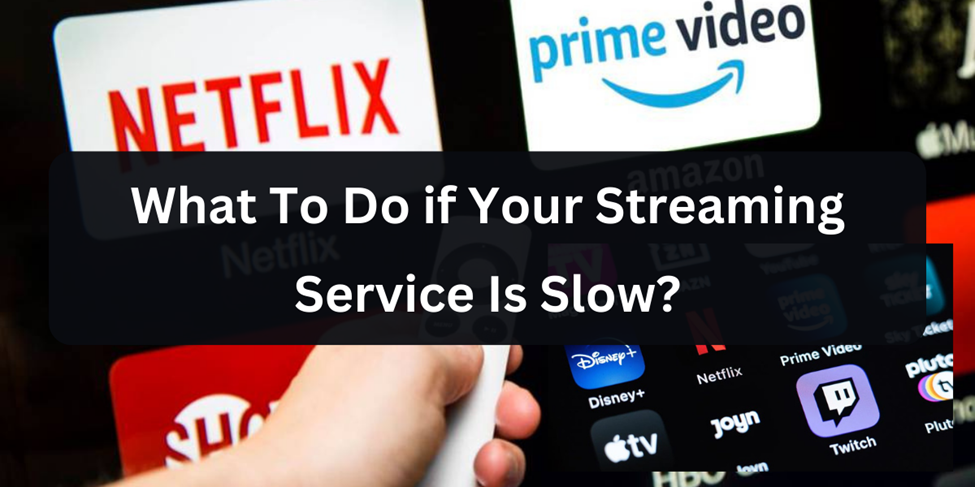
The human need for media seems to have no end. We use it to stay up with the news and amuse ourselves. Anyone who frequently streams music or videos is aware of this. Unlimited streaming is fantastic. Until your stream sputters to a halt or your video disintegrates into a frustrating jumble of buffering pixels.
Just when you thought you were free of buffering problems, the dreaded spinning circle appears on your computer or TV screen. The spinning circle indicates slowed or stopped streaming, appearing once more in the middle of your movie.
Want to return to your show but are tired of all the interruptions? With this fast advice in this article about internet and data speed, app upgrades, and more, you can enjoy improved streaming quality.
What Is a Streaming Service?
A streaming service enables you to watch movies and TV shows on your TV, phone, or computer without having to download them from the internet.
Simply put, streaming is what happens when customers use Internet-connected devices to watch TV or listen to podcasts. Streaming is made possible by internet and cable services.
Nowadays, the best tv cable providers also offer high-speed Internet service, making it simple for cable subscribers to take advantage of on-the-go streaming. Therefore, you can always have access to your cable television service wherever you are thanks to your mobile device!
11 Techniques for Enhancing the Speed of Your Streaming Services.
1. Turn Off Other Devices Connected to the Internet and Cable Services
How many devices in your home are linked to the internet? When attempting to watch Netflix or another streaming service, problems may arise due to the sheer number of devices in our homes.
Check out how the other devices in your home are operating if you’re having trouble streaming on your laptop or TV.
Look around your house to identify the equipment that is causing your streaming service to lag. Turn off rival hardware and software. Houses have numerous devices that are constantly using Internet and cable services.
A smart house may also include your TVs, refrigerator, oven, thermostat, and bathroom scales. These all can make streaming very slow.
2. Choose a Lower Streaming Resolution
The simplest method to increase your streaming speed seems to be the most obvious. Lowering the resolution of your video streaming is a quick tweak that could have a significant impact.
You will be able to watch movies and your favorite shows without buffering if you use lower resolutions. When watching videos, you typically don’t need to use the highest screen resolution. A simple improvement would be to reduce the resolution, say from 1080p to 720p, and you wouldn’t even notice the difference.
You may tailor your viewing experience based on what appears best. This is due to the numerous channels that offer a variety of connection speeds. If you have a faster connection speed, you can stream with a higher resolution (1080p and above). As your internet speed gets slower, you have to adapt by reducing the streaming resolution relatively.
With the right streaming platform and the best satellite connection provider, you can stream videos in HD. You won’t need to sacrifice the streaming resolution to avoid buffering. Fast connection speed from the best satellite providers lets you enjoy HD movie streaming without buffering.
3. Check for Unwanted Intruders in Your Internet Network
Someone could use your bandwidth if your Wi-Fi password security is a little lax. This can also happen if you live in a place where other people can access your Wi-Fi connection. Your video streaming service may be having trouble if someone else is using your internet cable service.
Additionally, the use of smart gadgets is growing, which puts additional strain on your bandwidth. Even while many of these gadgets consume a remarkably tiny amount of electricity and have no network overhead, it all adds up.
4. Use Ethernet Cables
An Ethernet cable provides a direct wired connection between your router and your hardware when it comes to streaming. The difference between using a wired connection and a wireless connection can impact the quality of your stream.
You may prevent any buffering issues with your streaming service by connecting your computer to the internet through an Ethernet cable. The latest Cat 7 cables can support an amazing 10Gbps, and Ethernet cables typically support speeds of up to 1Gbps.
5. Delete Temporary Cache
Yes, transient files cause digital clogs that could make your video streaming service sluggish. This is because they can be stored separately from the rest of the software files by your streaming service. Although you are not required to remove these cache files permanently, doing so will allow for quicker access times by making room on your hard drive.
6. Restart the Router and Update the Streaming Device
Power cycling, or restarting the router, can improve performance by clearing the cache, which you can think of as your device’s secret memory. Additionally, the router can be reset, which simply returns it to its factory preset settings. You will need to reconnect phones, computers, and a few other gadgets if you do this though.
Pay attention to update notifications on your phone, tablet, or satellite TV. Updates frequently increase security as well, and they may stop buffering.
7. Use Local Storage
Downloading the files to your playback device is yet another approach to take advantage of clear video playback. In this manner, you can view the files independently from any streaming services that rely on an internet connection. You can delete the previous file and download the new one whenever you wish to view something new.
8. Quit Non-Streaming Tasks
Quit any other open apps; they consume processing power that could be used for streaming. It’s better to either pause a download or wait for it to finish if you’re in the middle of one.
Excessive programs and tabs should be closed. Cleaning up your streaming gadget is also necessary. Close any open tabs and browsers, Steam, Skype, and other programs that you aren’t using.
9. Switch to 5GHz
You should think about altering your Wi-Fi channel if you are moving your router around. If your router is dual-band, you can pick between the 2.4 GHz and 5.0 GHz channel types. If you use the 5.0 GHz spectrum for streaming instead of the more popular 2.4 GHz channel, you might see fewer competitors.
Although the 5.0 GHz channel has a greater speed than the 2.4 GHz channel, it has a shorter range, so you must keep your streaming device near your router.
10. Disable Hardware Acceleration
This requires a little more technical know-how, but it’s not difficult. You can quickly learn how to do it by conducting a Google search. If your streaming issues are persistent, it may or may not help, but it’s worth a try.
11. Move Routers
It will be difficult for your Wi-Fi signal to pass through heavy furniture and walls. If you’re using a wireless router or streaming device, try moving them into a room with plenty of space. Additionally, it is best to spend money on a WiFi range extender if you are adding more than a few wireless devices to your home network.
Conclusion
The good news is that there are some easy fixes you may try to speed up your connection. There are various reasons why streaming services may be slow. These suggestions range from moving your router and gadgets away from other equipment. This way, they do not interfere with the signal by using a VPN or Ethernet connection instead of Wi-Fi. Try any of these for a better streaming service because they are all reasonably priced or virtually free.






